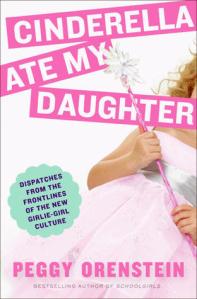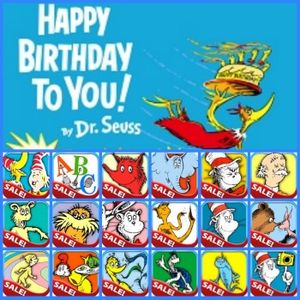
Last week, after hearing and reading rave reviews from various sources, I finally got the chance to go see the Hunger Games on the big screen. I did enjoy the movie experience (it’s been almost a year since I’ve been to the theatre) but I must say, I didn’t seem to enjoy the movie as much as I thought I would.
I did think the movie was a good visual to the book as far as the characters, sets and costumes go.
The way Panem was interpreted was spot on. However, the highlight of the entire film, to me, was the cinematography. That was not interpreted from a written page but was rather a stylistic and creative choice. The camera was used to tell the story along with the tributes. We saw much of the action from their perspectives or from their proximity. It really felt as thought the movie was shot as a documentary rather than a fictional story. And I think that was a very smart move. The approach really helps the viewer be more a part of the action as opposed to an outsider looking in.
Another creative interpretation of the story was the actual ‘game board’, if you will, that the gamers used to manipulate the playing field. As I recall, there weren’t too many details about how the game master called the shots and made things come to reality. The idea of the players being at the fingertips of those who control them became quite literal at the electronic game board where the illusion of night and day, the announcements of children’s deaths, the fires and unnatural creatures all came to be through the imagination and the simple electronic manipulations of those who controlled the ‘playing’ field.
Granted, movies are never quite as detailed as the book, that’s a given. Although the film lasted about 2.5 hours it still did not carry all the details of the text (obviously). Although I think some details could have been catered for despite the time limit; such as: Butterball (Prim’s cat) is actually long haired ginger, not black and white. Yes, I know it’s a small detail but why change it? Also, the birth of the mockingjay pin which is to become the symbol of the revolution and almost synonymous with Katniss herself is completely altered. Not a bad alteration considering the ‘new story’ but still, it’s quite important. I do understand the need to shave off excess information due to time limits though. If there were to be all the details then 6 movies rather than 3 would be in order to complete the visual trilogy.

As far as characters go, I must say, I was very impressed. The acting out of each of the personalities were extremely accurate and Katniss herself was really great. She really was the heroine that was created in the books. Jennifer Lawrence did an incredible job at bringing out the characteristics of a heroine who has become loved by girls and boys alike. Her attitude, temper, rashness, bravery and her refusal to succumb to the atrocities of the capitol were evident. It was very nice to see such a character come to life as opposed to the stereotypical girly girl of Hollywood whom we have all become accustomed to seeing whether or not we agree with the stereotype.
The added scene at the end of the film where the game master was left in a locked room with the berries was also, I thought, I good call. We are never told how he had been killed in the books; only that he had ‘mysteriously’ disappeared in the second book of the trilogy. His death is left to our interpretation. And I thought the movie’s version was a good one.
One thing that did get on my nerves after a while was the number of times the phrase “May the odds be ever in your favour” was repeated. I just think that was slightly over done to the point where I almost expressed the notion of ‘moving on already’ out loud! Thankfully I wasn’t sitting next to any strangers.
I am however, shocked, at the idea that the movie ended up with a PG rating! Now, as much as I think the story is great I have some serious problems with the idea that it has been categorized as Teen Fiction. Granted, it may be alright for more mature teens. By this I mean 16 and up. But I’ve noticed many 9 yr olds devouring the series. Language wise, it really is an easy read even for a 9 year old who reads well. Its appropriateness, however, certainly isn’t. I just have a very hard time legitimizing why it is ok for such young malleable minds to be exposed to such a sadistically violent story. Yes, some children are extremely mature but I am addressing this more generally. I’m just wondering how much of the bigger picture or message of the story is being absorbed as opposed to the blood and gore. If a young person is to read the book there has got to be several follow up discussions that carry the story beyond the violence. Otherwise, it’s almost another way to desensitize children to extremely aggressive behaviour. Back to my point of the PG rating… I really think some of the more visually disturbing details had been left out in order to gain this rating and reach out to a wider audience. i.e more cash! I worry when I find 8 and 9 year olds in the theatre while this is playing. So, from a concerned teacher’s point of view, I stand by this opinion quite strongly despite my being a fan.
Anyways… back to the movie: I think I may have been expecting more from this visual interpretation. Although there were quite a few creative decisions that were made in terms of character development, settings and cinematography, I still did not feel the ‘Wow!’ factor and the extreme emotion (to the point of very many tears and temper tantrums) as I did while reading. In my opinion, the depth of the story itself cannot be appreciated in its entirety without reading the series first.
Is this to say that I will not be seeing the full series as it is released? Certainly not! But my advice to those who still have not read the books is: READ them! It is the only way you will be able to understand the several messages and depth of what the author is trying to convey.
~Previous post: A few thoughts about the first book of the series… click here~


 All avid readers are oh so familiar with the ever-growing to-read list. But despite that, there is always a time where one hits a roadblock and is unsure what to read next. And we ask ourselves: “What book should I pick up next?” “What am I really in the mood for?” or “Is that book really going to be worth my while?” It’s either that, or you pick up about 3 books at a time and end up not completing any! Each story is just left hanging as you loose interest in one or mix up one story with another… now that can’t be good! So, remind me again, why was this character from a mystery novel riding on the back of a unicorn from another?
All avid readers are oh so familiar with the ever-growing to-read list. But despite that, there is always a time where one hits a roadblock and is unsure what to read next. And we ask ourselves: “What book should I pick up next?” “What am I really in the mood for?” or “Is that book really going to be worth my while?” It’s either that, or you pick up about 3 books at a time and end up not completing any! Each story is just left hanging as you loose interest in one or mix up one story with another… now that can’t be good! So, remind me again, why was this character from a mystery novel riding on the back of a unicorn from another?



 Today readers young and old celebrate the 108th birthday of the beloved author and illustrator Dr. Seuss. His timeless stories packed wit humor and beautiful life lessons have made their way into the hearts of so many and are celebrated by all.
Today readers young and old celebrate the 108th birthday of the beloved author and illustrator Dr. Seuss. His timeless stories packed wit humor and beautiful life lessons have made their way into the hearts of so many and are celebrated by all.

